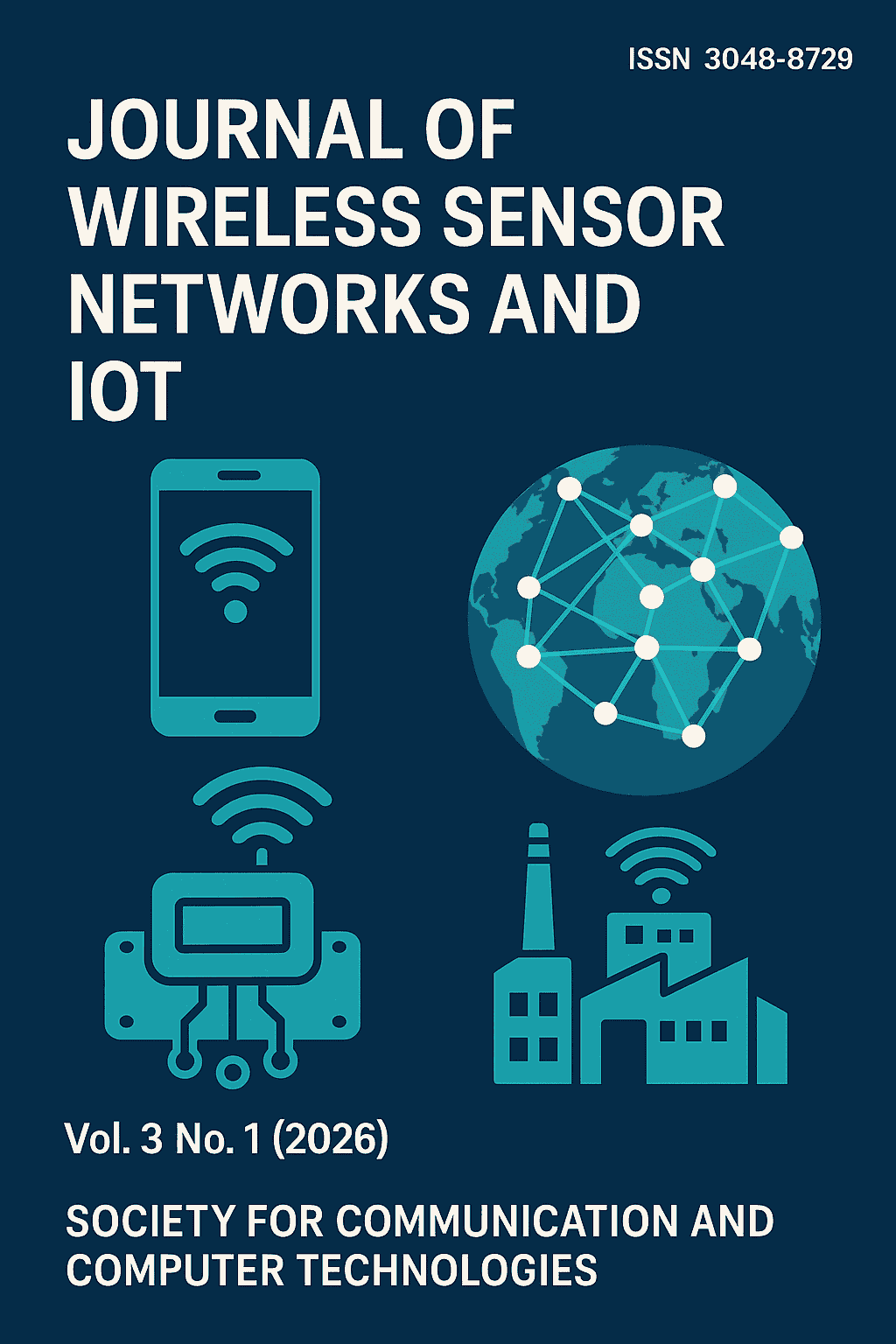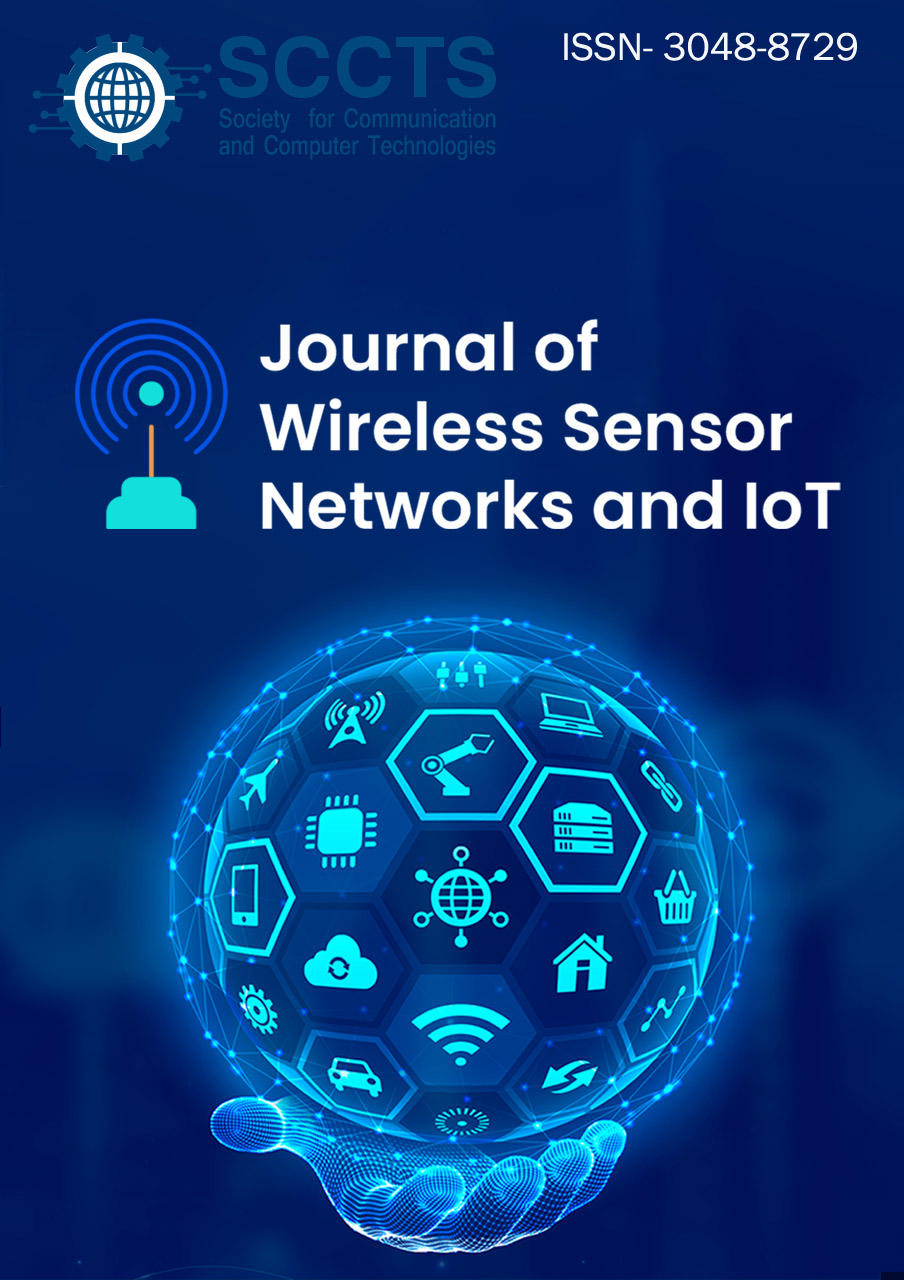Design and Implementation of Edge-Enabled IoT Framework for Real-Time Environmental Monitoring
DOI:
https://doi.org/10.31838/WSNIOT/03.01.03Keywords:
Edge Computing, Internet of Things (IoT), Environmental Monitoring, Real-Time Systems, Low-Latency Processing, Energy Efficiency, Smart Cities, LoRaWAN, Embedded Sensors.Abstract
The growing need of valid and efficient information on environmental readings has been the leading force behind the large-scale propagation of the Internet of Things (IoT) technologies. Conventional cloud-centric IoT solutions are however characterised by high latency, high bandwidth usage, lack of scalability and high energy consumption hence may not be appropriate in real time environmental monitoring solutions. Here the proposed design and implementation of a new IoT framework with edge-enabled capabilities is unique in the sense that it combines environmentally deployed low-power sensor nodes with a lightweight edge computing level and flexible communication protocols will allow effective and real-time acquisition and processing of environmental data. The architecture is based on the utilization of microcontroller-based nodes in the sensor framework that are used to track such parameters as temperature, humidity, and air quality and process the received data on the edge apprehending anomalies and synchronizing cloud in accordance with generated events. The actual prototype taking Raspberry Pi as the edge gateway and the LoRa / Wi-Fi as the communication channel has been deployed in a semi-urban test set-up. In the course of experiments, the suggested system shows 45 percent of reduction in response latency, 38 percent in network bandwidth consumption, and 35.6 percent in energy efficiency in comparison to the conventional cloud-dependant systems. The findings demonstrate that the architecture offers efficient, scalable, and responsive platform capable of supporting various real-time environmental monitoring solutions, such as smart cities, precision farming, and areas that are prone to disaster. The proposed study helps add a practical and scalable model of the deployment of edge intelligence in IoT-based environmental systems, which are extendable in the future to make use of federated learning and fog-to-cloud orchestration.






